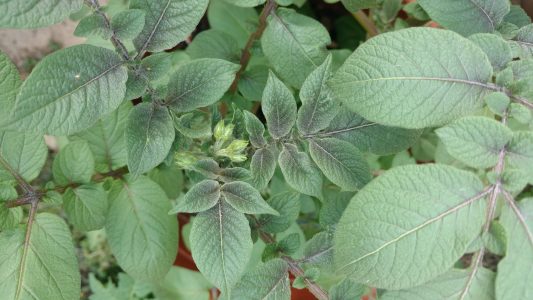

Getting Started On The Right Foot
Spring is here! And soon it’ll be time to get growing! And perhaps, like me, you have already set out some plants. But wait! Have you carefully considered some important facts which could make the difference between gardening success or failure? The truth is that every year many gardeners fail, because they just didn’t get started on the right foot to begin with by choosing wisely where to pick a spot to garden. Yes, location is very important. Let’s discuss some basic but essential factors regarding a good location. And let’s keep it as simple as possible, so this can be your quick-start guide.
- Sun: you must insure that whatever you’re growing receives adequate sun. Generally speaking, for most vegetable gardens that means at least six hours of sun; and eight to ten hours of direct sunlight would be better. So don’t plant a garden where trees, buildings or geographic features will cast a shadow all day long. Southern exposure is best.
- Soil: soil is a significant factor in choosing where to plant a garden. Poor soil means a poor harvest. It’s as simple as that. Without getting into a complicated discussion on soil fertility, structure and composition, lets just say that your garden spot either needs good soil to begin with or you should have good soil delivered; and then use that soil to raise the beds. A raised-bed garden solves a lot of problems right from the start. Another thing you can do to improve the soil is amend it with compost. Just adding enough compost can solve poor fertility, structure and composition.
- Water: you must pick a spot where adequate water is available. Vegetable gardens need copious amounts of water in order to flourish. On the other hand, too much water can literally drown your plants by killing the roots. Roots need oxygen, so don’t choose a garden location that has poor drainage. That’s a big no-no.
- Wind: as a retired farmer I can tell you that wind is a crop killer. One good windstorm can ruin an entire crop; therefore, try and choose a spot for your garden that is somewhat protected from the wind unless you want all of your hard work to be literally blown away in as little time as a few hours. In some cases, it might be necessary for you to surround your garden with a wind fence.
- Pests: it doesn’t matter if it’s a swarm of small bugs or a very large and hungry moose, pests can be a real headache. Choosing a pest-free spot and/or using fencing and bug nets can make or break a garden. Invest in proper fencing or risk big losses.
- Position: how far away from your house that you plant a garden may not seem so important at first, until you realize that being able to keep an eye on your garden both day and night is really important. This is especially true if wildlife is raiding your garden. So try and plant your garden in a location where you can see it from your house. I like to be able to shine my flashlight from right out of my bedroom window and see what’s going on in my precious garden even in the middle of the night. Lastly, try and position your garden on fairly level ground. It’ll be a lot easier working on level ground.
Well that’s it: your quickstart guide to choosing a good location. Of course, there’s a lot more to gardening than what’s written above. But choosing a good location is the first step. For some additional tips please check out this video: “What Grows Where You Live In Alaska”. Planning and laying out your garden is next. But that’s a subject for another day.
Happy gardening!
About ggphillips
Twitter •